It is decidedly Spring here—finally. We’ve had our fits and starts but everything is now beginning to look vibrant and lush. The wildflowers are blooming; the butterflies and bumblebees are flitting; the birds are eating bugs.
With the onset of warm weather we have a lot of projects (too many) in the works. We have so many things to tackle, that we (I, mostly) need to try harder to finish projects before starting new ones. But here’s where we are at the moment with the outside projects:
the leaves!
I’ve raked and raked and raked and the place is still covered with leaves! It may seem quixotic to rake even one single leaf around here, but my rational is this: I would like to know what’s under the leaves. What is under the leaves? Old landscaping efforts. Rusty pipes and 2x4s with nails sticking out of them and old roofing tiles. Stopped-up drainage pipes. Potholes. Blackholes. Broken toys. Tools. Litter. These are things we should know about, and fix or dispose of properly. I’m only doing the areas immediately around the house, but even that is taking ages and there are still piles of leaves that we need to cart off to the giant leaf pile cage in the back. The work on this continues.
the composting
Part two of the leaf-raking plan is leaf molding—basically collecting leaves into piles and keeping them wet until they rot into humus. The forum I linked to has good information and discussion, but in summary leaf mold is a soil conditioner: the fungus that breaks down the leaves have little hairs that work their way into and change the structure of soil by either grabbing loose soil bits and pulling them together, or working through dense soils and breaking them up. We have some dense clay soil here, so YES PLEASE. It also helps with water retention and adds minerals to the soil.
We also started our kitchen compost. Kitchen scraps are not in the same cage as the leaves because they decompose differently: acidic leaves are broken down by fungi; kitchen scraps by bacteria. By one or the other we’ll eventually have some rich organic matters enriching our soil. Can’t wait.
fungiculture
We’ve also started to cultivate mushrooms! We inoculated a few stumps and logs with Hen of the Woods, two types of Shiitake, and two types of Oysters. Jamie ordered the plug spawn from Mushroom Mountain and, following their instructions, we simply drilled holes into the stumps and logs then hammered in the plug spawn and covered the ends with wax to keep the plugs damp and clean. These pictures show us putting in one plug, but in the end this log had a couple dozen plugs in it.
It was quick and easy. Now we just have to wait. According to Mushroom Mountain’s website, “when the mushroom’s root system has threaded itself throughout the log or stump, it will want to start fruiting. Fruiting can be seasonal, depending on temperature, and last several years.”
Above, on the left, is a stump with its mushroom plugs inserted, pre hammering and waxing. And on the right, an inoculated log that we set up as a sort of leaf cage fence post, the idea being that the leaves and the mushroom logs will form a symbiotic relationship and speed one another along.
the deer fence and the fruit trees
You may remember that we bought a number of fruit trees and shrubs at the Lahr Symposum plant sale from Go Native Tree Farm. Before we could actually put them in the ground we really needed to install proper deer fencing to protect them from the marauding gang of neighborhood deer that were just waiting to eat anything and everything we might have nerve to put in the ground. The existing fence was not only too short but crappy and collapsing. (See: breach photo.)
And so the relatively quick project of planting some trees became a lengthy one as we [Jamie] figured out a solution to protect our budding little spice bushes, serviceberry, et.al. We ended up stringing netting along a flexible “aircraft cable” that we hung from hooks screwed into tree trunks about 7′-6″ above the ground. It’s not a permanent solution but it should last awhile and be effective.
Here’s a photo in which you can kinda see the netting, if you look for the white aircraft cable:
Up close you can also see the orange flags on the garden stakes we used to secure the netting to the ground. The fence is so subtle that we should probably go ahead and tie some flags at eye level so one of us doesn’t walk straight into it. The end goal is to build a short, nice-looking fence that encloses the back yard entirely (to keep in the dog), and a high perimeter fence a few feet outside that (to keep out the deer). Jamie doesn’t necessarily agree with the two fence approach but we.will.see.
With fencing up we were able to put the trees into the ground. I placed the potted trees where I wanted them to go and Jamie dug the holes, planted the trees, and watered them. (Division of labor is a good thing.) Further dividing the labor, here’s Broccoli inspecting my placement of the trees:
In the center of the photo are some potted herbs that we’ve carted around from apartment to apartment before bringing them here. The thyme and the mints are happy and already growing like crazy.
And here is Jamie planting, for the first time in the ground, one of his prized pawpaws that he’s raised from seed:
Someday all these trees and shrubs will grow big and strong and we’ll have elderberry jam and spice bush-seasoned venison on our dinner plates.
figuring out how we’re draining
An ongoing project has been to figure out how the exterior drainage works around here. We’ve been running “hose tests” on the downspouts to find where each drains to. (By hose test I mean sticking a hose into a downspout and running around and checking for wet spots. I don’t know if that’s a thing, but it’s what we’re doing.) Our testing has been revealing which drain pipes are clogged or compromised by tree roots. We still have a lot of work to do on that front.
We did clear the leaf debris from the basement window wells. One well in particular was really bad: under the loose leaves there was about 8″ of dense leaf mold and soil covering the drains. We dug that up (and put the leaf mold into the leaf cage!) and put perforated drain cover caps on the ends of the drain pipes. Here we are, mid-excavation:
That wheelbarrow on the left is full of soil dug up from that one window well. (!) The tops of the drains are still too high and close to the bottoms of the windows, and we need to put down gravel, but they’re in better shape than they were before. Making progress!
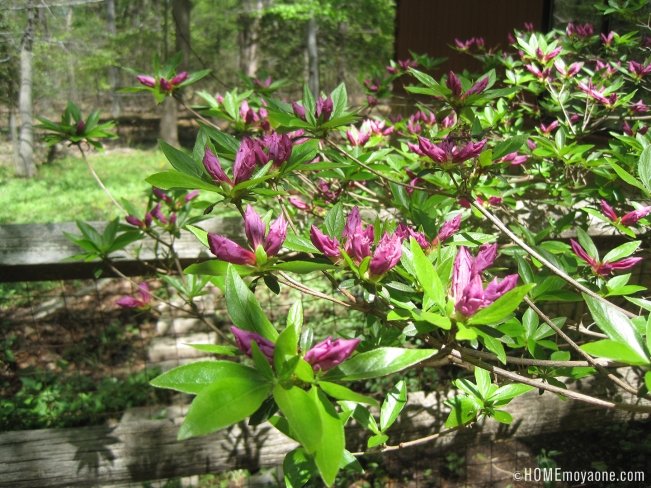
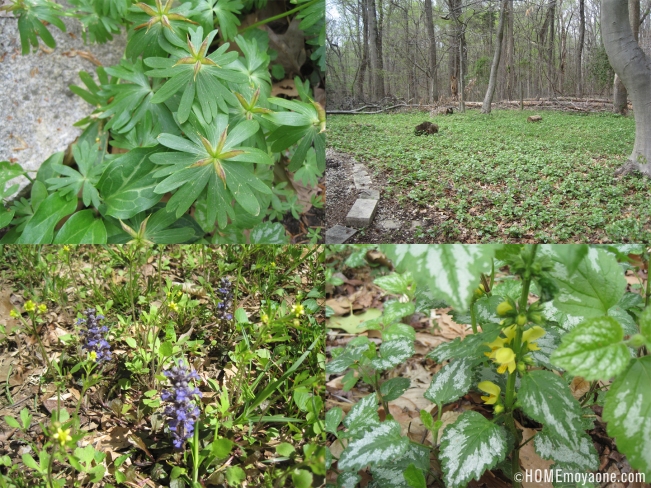
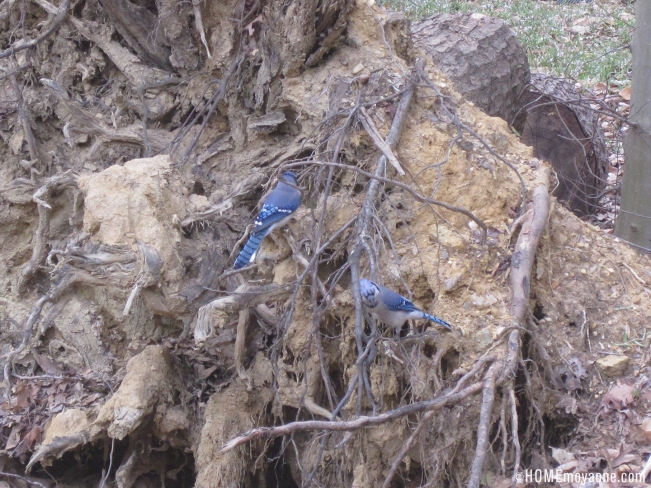


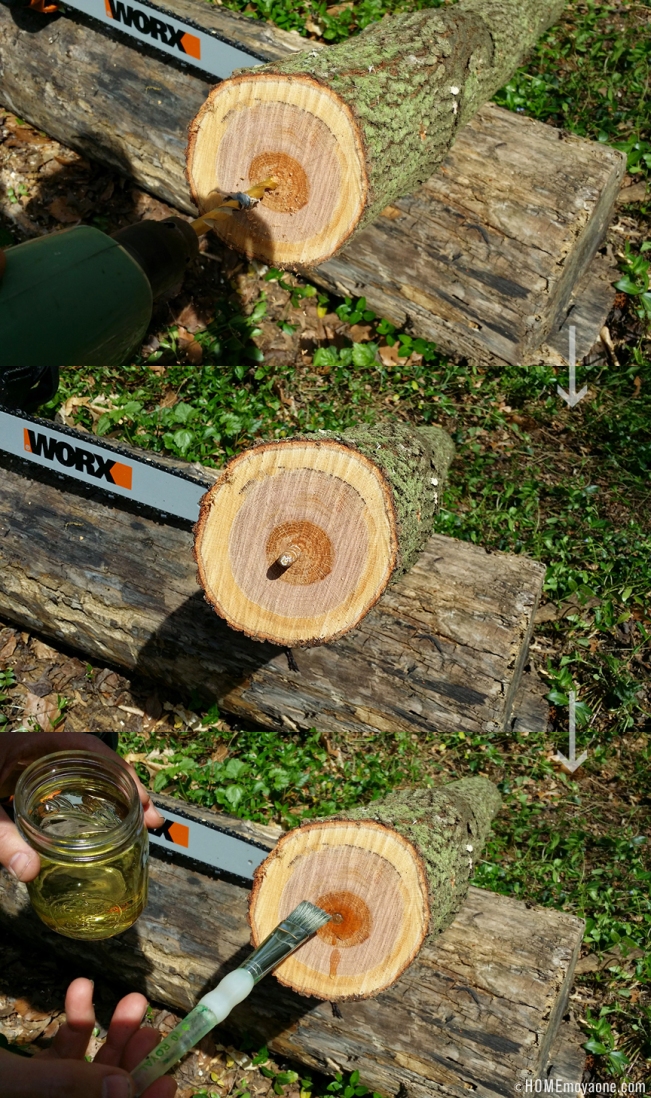
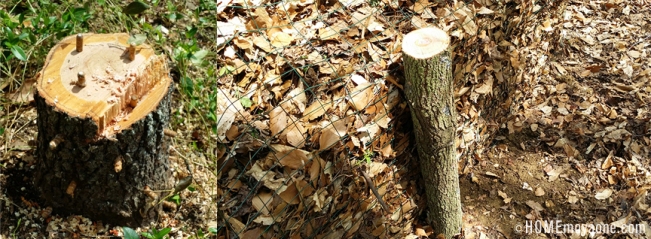

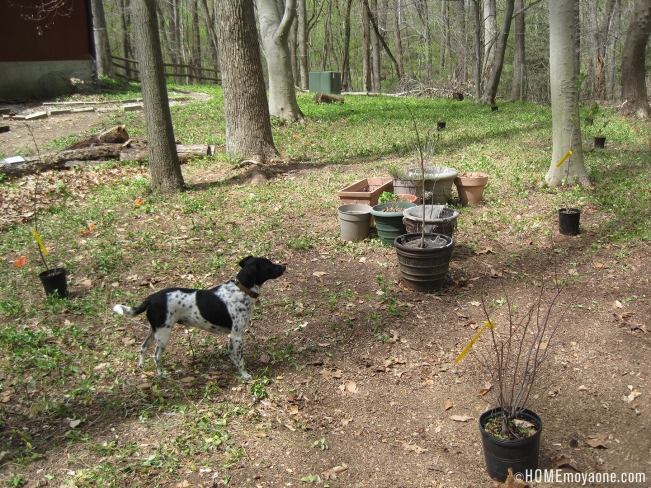

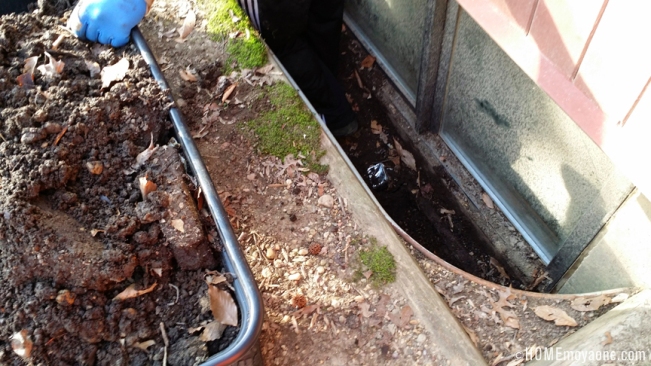

One Response to First yard projects
What?! You guys are amazing! I can barely get my spring flowers planted….